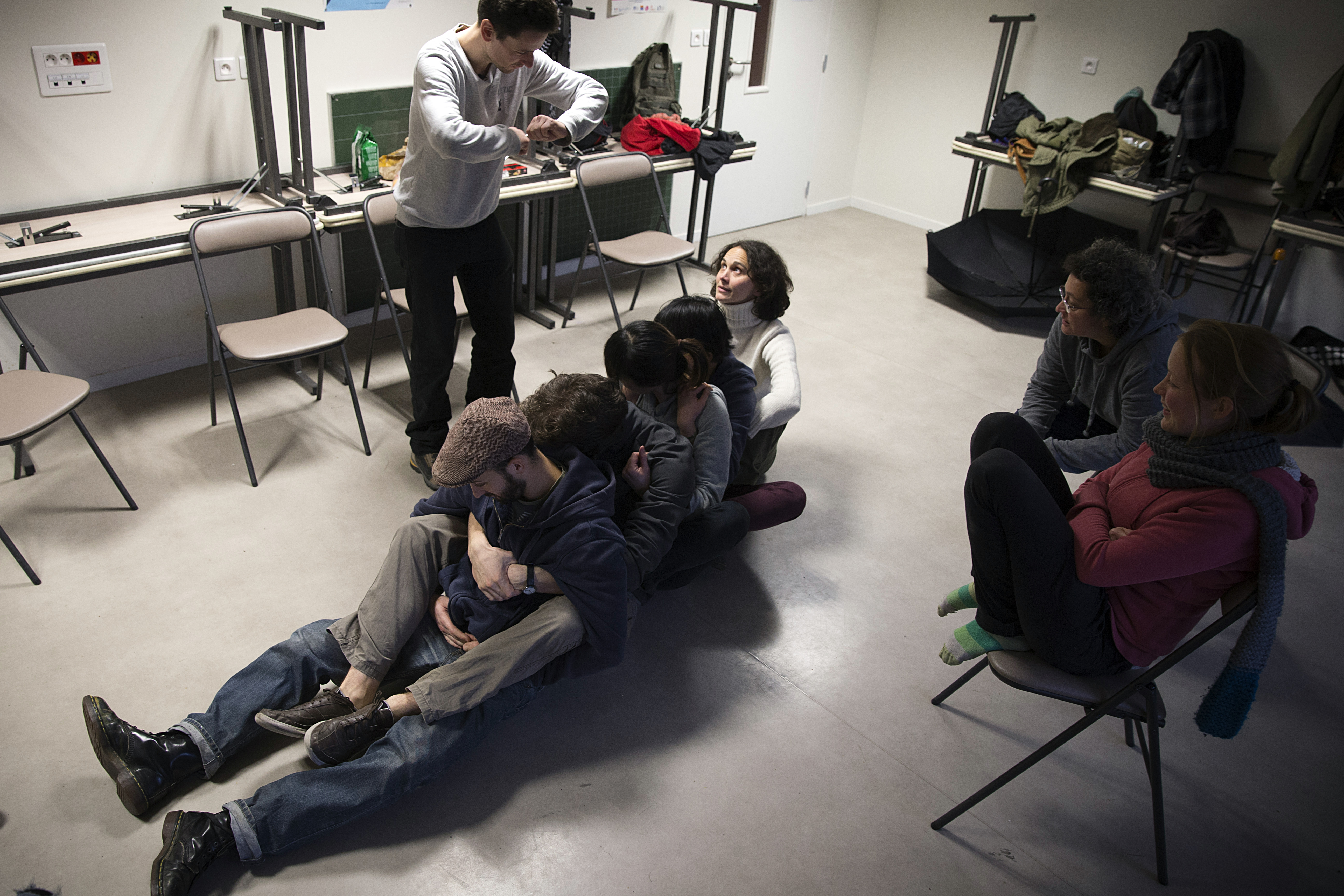We Spent an Afternoon Learning the Art of Civil Disobedience

Credit to Author: Matthieu Foucher| Date: Fri, 26 Apr 2019 13:23:47 +0000
This article originally appeared on VICE France
It’s a grey Saturday in Paris, and Désobéissants – a protest collective that specialises in “direct nonviolent action” – have invited 50 or so activists-in-waiting to a community centre to learn the basics of civil disobedience. The group was founded 12 years ago by former Greenpeace activists, and in that time they have trained over 3,000 people in the art of taking a stand.
Today’s instructor is Rémi Filliau, who explains that he’s been a frontline activist for many years, and has been arrested some 50 times. The class, made up of people aged between 20 to 60 years old, is in a good mood – excited to learn about how to design a protest, how best to push past a police cordon, what to do if you get arrested and why it might be a bad idea to pick a fight with an armed officer.
Take a philosophical stance
The entire room is transformed into a matrix with two axes. One axis represents “participating” vs. “non participating”; the other represents “violent” vs. “non-violent” action. The instructor runs us through a series of actions that could be taken to demonstrate against GM crops, and each participant is asked to pick a spot on the matrix that they think represents each action.
We quickly realise that the notion of what constitutes violence is incredibly subjective. “If you ask me, for example, I might not think that hitting a police officer during a yellow vests protest is a particularly violent action,” says Filliau. But whichever action you do pick, Filliau adds, you should never wear a mask, as covering your face often leads to a harsher sentence if you get arrested, and the general public tends to be more empathetic towards demonstrators who show their faces.
Be prepared
For the next 30 minutes, we learn about the methodology of planning a demonstration. Filliau recommends following some simple steps. First: define your goals, both short- and long-term. Then identify your natural supporters, but also your objective supporters (the enemies of your enemies). Finally, recognise your actual enemies.
After making a list of our strengths and weaknesses, it’s time for us as a group to start scripting out our own action, complete with multiple possible outcomes. Filliau reinforces the importance of having a Plan B – ideally one that has wide consensus so everyone understands the risks of switching strategies.
Meeting your enemy
For the demonstrators vs. police role-playing exercise, some of us play protesters tasked with getting past a police cordon. Our instructor breaks down the best strategy for when to break through and when to hold your position. “I wouldn’t advise trying to get past a riot officer,” Filliau says. “But I think it’s fine when you’re dealing with an inexperienced officer out in the countryside.”
There are a few tactics for breaking past the police, such as throwing yourself at the cops with your hands in the air, as a way to divert their attention, to create an opening for your comrade. Alternatively, you can cover yourself in glue or a bad-smelling liquid so the police don’t want to come near you
But Filliau reminds the group that police officers are trained in violent situations, so it’s important not to try to play them at their own game. Instead, always diffuse the situation where possible. “It’s helpful to repeat that you have nothing against them, even if it’s not true. Or acknowledge their difficult work conditions,” Filliau adds. And it’s important to always film your interactions with the police. “If at all possible, never be alone with a police officer,” he tells us. “And if you do film police violence, put that footage on the internet immediately, or get away from the action to keep your images safe.”
Watch: How the Yellow Vest Protest Forced Macron to Back Down
How to resist being evacuated
Sitting in circles in groups of five, legs tangled and hands hidden, we’re learning the “turtle technique” and the “the little train” – two positions that make it harder to be picked up and removed by the police.
“Even if you have a black belt in judo, don’t try to confront the police – they have clubs.”
When the police decide the party’s over, being well prepared allows you to buy some time, as well as manage the stress of the situation. We begin by picking a designated “guardian angel”, tasked with the wellbeing of the activists. “In moments like this, chanting slogans helps you to forget your fear and pain,” explains the instructor, adding: “But even if you have a black belt in judo, don’t try to confront the police – they have batons.”
Staying strong at the police station
One participant is asked to play the role of a protester brought in for questioning. He must resist an interrogation by two aggressive police officers who keep threatening him. Filliau explains that in the initial identification phase, you should only give your basic information – the sort of stuff that’s on your ID – and not any info about your employer, salary or any past protesting you’ve done. But whatever you do, don’t lie.
“Some protesters have been jailed in the past for identity theft,” he explains. “Anything you say will be used against you. So hold onto ‘I have no comment’ – that will protect you and your friends.”
This article originally appeared on VICE FR.